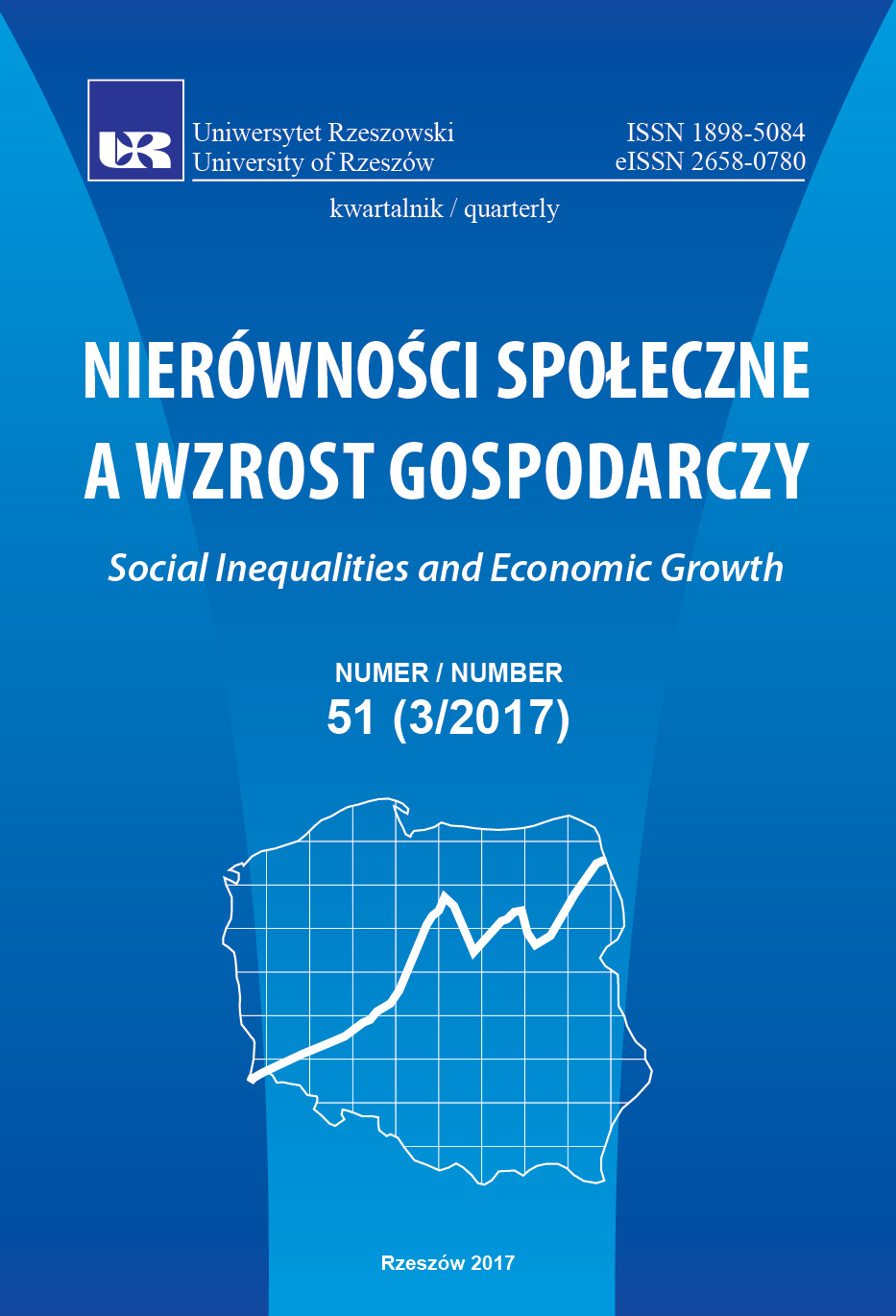Prosperity, ‘wielka kompresja’ i Reaganomika: wnioski dla polityki gospodarczej
DOI:
https://doi.org/10.15584/nsawg.2017.3.10Słowa kluczowe:
polityka gospodarcza, Prosperity, wielka kompresja, ReaganomikaAbstrakt
W XX wieku Stany Zjednoczone przeszły przez kilka radykalnych transformacji polityki gospodarczej będących odpowiedzią na zachodzące społeczne, technologiczne i ideologiczne zmiany. Amerykańska gospodarka przeżyła kilka kryzysów i doświadczyła intensywnego wzrostu, który uczynił ją światowym liderem. Bazując na tym historycznym doświadczeniu, możemy wyciągnąć ważne wnioski dla polityki gospodarczej. Trzy podokresy historii ekonomicznej Stanów Zjednoczonych – Prosperity (1920–1929), ‘wielka kompresja’ (1937–1947) oraz Reaganomika (1981–1989) – są poddane pozytywnej analizie w celu znalezienia odpowiedzi na fundamentalne dylematy polityki gospodarczej. Szczególną uwagę poświęcono zmianom instytucjonalnym, polityce redystrybucyjnej i teoretycznym założeniom kształtującym politykę ekonomiczną. Analizowane są ideologiczne złudzenia, które się zmaterializowały w amerykańskiej gospodarce i które nie zostały w odpowiedni sposób zaadresowane przez rządzących, powodując patologiczne zjawiska w polityce i społeczeństwie.Downloads
Download data is not yet available.
Pobrania
Opublikowane
2020-11-13
Jak cytować
Osiichuk, D. (2020). Prosperity, ‘wielka kompresja’ i Reaganomika: wnioski dla polityki gospodarczej. Nierówności Społeczne a Wzrost Gospodarczy, 3(51), 120–132. https://doi.org/10.15584/nsawg.2017.3.10
Numer
Dział
Artykuły
Licencja
Prawa autorskie (c) 2017 Uniwersytet Rzeszowski

Utwór dostępny jest na licencji Creative Commons Uznanie autorstwa – Na tych samych warunkach 4.0 Miedzynarodowe.


